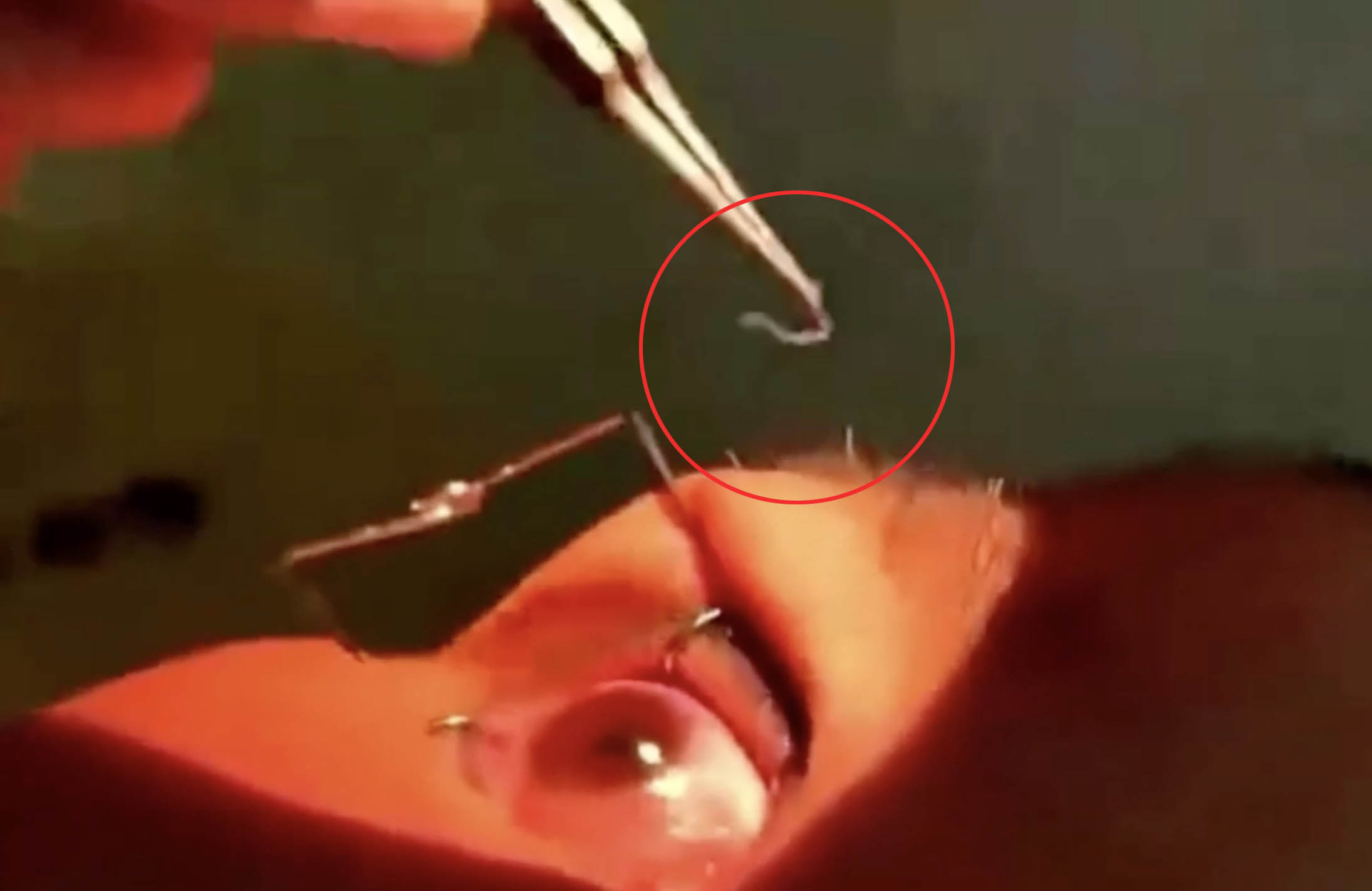DOCTORS have pulled more than 60 live worms from a patient’s eyes after she complained about them being itchy.
The woman, in China's Kunming, rubbed her eyes after they became itchy, only for a parasitic worm to fall out, local media reported.
Doctors at a hospital discovered she had 60 more of the worms in her eyes, with 40 live worms in her right and 10 more in her left.
They had been living in the space between her eyeballs and eyelids.
Doctors then removed the parasites and concluded the beasts were a type of roundworm, Filarioidea.
Those worms are normally passed through fly bites, but the woman believed she caught them from larvae on infected cats or dogs.
Read more on health

More than fifth of Brits admit falling asleep at work – with some dozing off on loo

Mum-of-two died after suffering brain injury from drinking too much water
She would have petted the animals, got the larvae on her hands, and then scratched her eye.
Some types of roundworms which live in the eye are known to cause blindness, but they are more commonly found in Africa rather than China.
Doctors have told her to return for check-ups in case any worms or larvae were left behind.
In another case, an American woman pulled 14 worms from her eye after pulling what she thought was a stray eyelash out.
Most read in Health

Number of cocaine users in their 90s turning up at hospital rises sharply

Dozens of children suffer lead poisoning after eating fruit pouches

New ‘highly transmissible’ Covid variant ‘could trigger fresh wave’

Girl died after catching ‘zombie pigeon’ virus that causes twisted necks
Abby Beckley, 28, thought she had a stray lash under her eyelid when she was two weeks into a fishing boat trip in Alaska.
Scientists said 14 translucent parasitic worms, called Thelazia gulosa, were extracted from the woman’s eye over a 20-day period before her symptoms vanished.
Meanwhile, a Brazilian was found to be riddled with tapeworms, after only thinking they had a cough.
The disturbing X-ray, shared by a doctor on Twitter, revealed hundreds of what appear to be bright blobs, each representing the calcified remains of a parasite.
The condition, named cysticercosis, occurs when larvae of a species of tapeworm – which normally lives in the intestines – enters tissues like the muscle or brain.
Humans become infected by accidentally ingesting contaminated food, normally meat.
Source: Read Full Article



